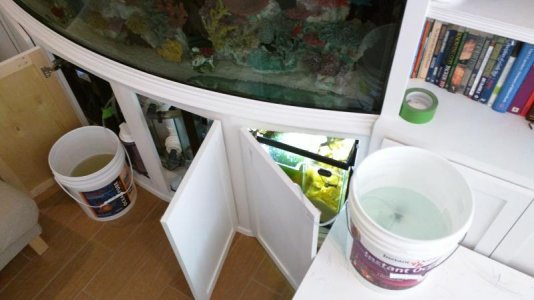lokii_37
New member
I think this is an awesome idea. Your SW topoff tank could a very short tank. If it were 6"x24"x48" that would hold about 30g. It could lay flat on the floor of a fish room. Put a bladder connected to the skimmer cup in the tank and your good to go.
I think emptying 30g of skimmate would be pretty nasty thou.
I think emptying 30g of skimmate would be pretty nasty thou.

